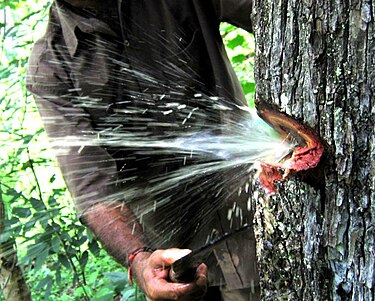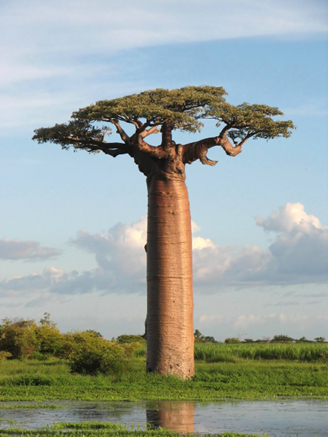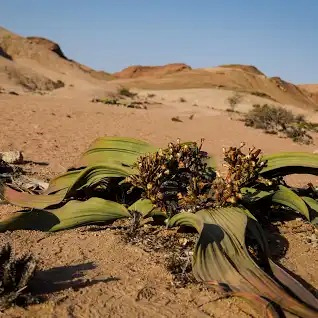Indigenous Water Conservation Methods: Unraveling the Role of Traditional Knowledge in Sustainable Resource Management

“We need the GREEN to keep the BLUE “
Water scarcity remains a pressing concern in India, prompting policymakers to explore innovative solutions to address this challenge. Amidst this backdrop, the utilization of indigenous knowledge and practices has gained prominence, with Terminalia tomentosa emerging as a symbol of traditional water wisdom. Drawing from historical precedents, such as the ancient water management systems of the Indus Valley Civilization, policymakers can learn valuable lessons in sustainable water management and ecosystem conservation.
 The ancient civilizations of the Indian subcontinent, notably the Harappan civilization of the Indus Valley, demonstrate a profound understanding of water management principles. The sophisticated network of canals, reservoirs, and drainage systems developed by these civilizations facilitated agricultural productivity and urban growth. These historical water management practices, rooted in indigenous wisdom, highlight the importance of integrating traditional knowledge into contemporary water policies.
The ancient civilizations of the Indian subcontinent, notably the Harappan civilization of the Indus Valley, demonstrate a profound understanding of water management principles. The sophisticated network of canals, reservoirs, and drainage systems developed by these civilizations facilitated agricultural productivity and urban growth. These historical water management practices, rooted in indigenous wisdom, highlight the importance of integrating traditional knowledge into contemporary water policies.
In the modern context, Terminalia tomentosa has emerged as a focal point for indigenous water management practices. The Konda Reddi tribe in India, for instance, has relied on the unique water storage capabilities of Terminalia tomentosa to sustain their communities during periods of water scarcity. This indigenous knowledge, passed down through generations, underscores the resilience and adaptability of traditional water management systems.
The case study of Terminalia tomentosa serves as a testament to the enduring relevance of indigenous wisdom in addressing contemporary water challenges. By incorporating indigenous water management practices into policy frameworks, policymakers can harness the ecological resilience of native flora and promote sustainable water management strategies.
 Professor Rakhi Chaturvedi from the Department of Biosciences and Bioengineering at IIT Guwahati emphasizes the need for scientific inquiry to complement indigenous knowledge. By studying the water storage mechanisms of Terminalia tomentosa, researchers can provide insights that inform policy decisions and conservation efforts.
Professor Rakhi Chaturvedi from the Department of Biosciences and Bioengineering at IIT Guwahati emphasizes the need for scientific inquiry to complement indigenous knowledge. By studying the water storage mechanisms of Terminalia tomentosa, researchers can provide insights that inform policy decisions and conservation efforts.
Integrating Terminalia tomentosa conservation initiatives into national water policies holds immense potential for enhancing water security and ecosystem resilience. Afforestation projects aimed at restoring Terminalia tomentosa habitats can mitigate the impacts of climate change on water resources while promoting biodiversity conservation.
Case Study 1: Baobab Trees in Africa
 Indigenous communities across Africa, particularly in regions such as Madagascar, Zambia, and Zimbabwe, have deeply intertwined their livelihoods with the iconic baobab tree (Adansonia species). Revered as the “Tree of Life,” the baobab’s significance extends beyond its towering presence on the African savannas. Observations within these communities reveal that certain baobab trees possess a remarkable ability to store significant quantities of water within their massive trunks and branches, acting as natural reservoirs in arid environments.
Indigenous communities across Africa, particularly in regions such as Madagascar, Zambia, and Zimbabwe, have deeply intertwined their livelihoods with the iconic baobab tree (Adansonia species). Revered as the “Tree of Life,” the baobab’s significance extends beyond its towering presence on the African savannas. Observations within these communities reveal that certain baobab trees possess a remarkable ability to store significant quantities of water within their massive trunks and branches, acting as natural reservoirs in arid environments.
In the harsh dry seasons characteristic of many African landscapes, indigenous knowledge passed down through generations has identified specific morphological features of the baobab, such as its swollen trunk and branches, as indicators of water storage capacity. These communities have learned to tap into these reservoirs by accessing the spongy, fibrous tissue within the baobab tree, extracting potable water vital for their survival during periods of drought.
Case Study 2: Welwitschia Mirabilis in Namibia
 In the arid expanse of the Namib Desert in Namibia, indigenous communities such as the Himba and Nama tribes have developed a profound understanding of the Welwitschia mirabilis plant’s water conservation abilities. Endemic to this harsh environment, the Welwitschia plant stands as a resilient symbol of adaptation to extreme arid conditions.
In the arid expanse of the Namib Desert in Namibia, indigenous communities such as the Himba and Nama tribes have developed a profound understanding of the Welwitschia mirabilis plant’s water conservation abilities. Endemic to this harsh environment, the Welwitschia plant stands as a resilient symbol of adaptation to extreme arid conditions.
Observations by these indigenous communities reveal that the Welwitschia plant can survive for centuries by efficiently capturing and retaining moisture from the fog and dew that shroud the desert landscape. Traditional knowledge passed down through generations has identified specific morphological features of the Welwitschia, such as its broad, strap-like leaves, which facilitate moisture absorption. Indigenous practices involve harvesting water from the base of the Welwitschia plant, where moisture accumulates, providing a vital source of hydration in the desert environment.
These African examples underscore the invaluable role of indigenous knowledge and traditional practices in harnessing the water-storing capabilities of plant species to mitigate the impacts of water scarcity. By recognizing and preserving indigenous wisdom, policymakers and conservationists can promote sustainable water management practices and enhance resilience in the face of climate change, ensuring the well-being of both people and ecosystems across Africa and beyond.
As policymakers navigate the complex challenges of water scarcity and climate change, they must recognize the value of indigenous wisdom in developing holistic and effective water policies. By drawing from historical precedents and embracing traditional knowledge, India can pave the way towards a more water-secure future for all.
In conclusion, the Terminalia tomentosa case study underscores the importance of integrating indigenous wisdom into contemporary water policy frameworks. By learning from historical practices and leveraging traditional knowledge, policymakers can unlock innovative solutions for sustainable water management and ecosystem conservation.